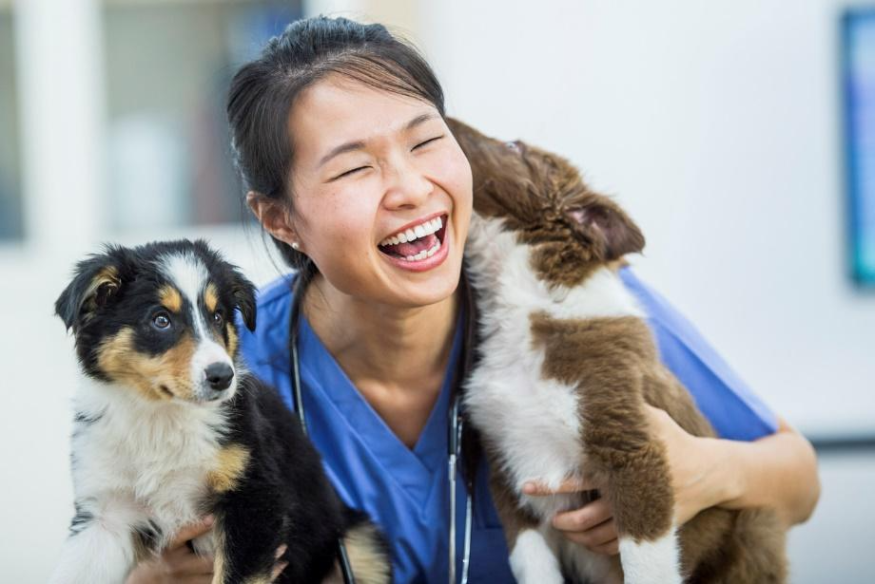
Global animal rights organizations have been crucial in convincing governments worldwide to protect and safeguard animal rights and welfare. Organizations such as the World Wildlife Organization, the International Fund for Animal Welfare and the Animal Legal Defense Fund continue to ensure animal welfare triumphs.
Sadly, many animal rights abuses continue, and it is often local activists taking on local government to stop them. Grassroots animal rights activism involves people taking action in their local community by volunteering and campaigning for change. Their activism varies from providing hands-on animal care and rescue to seeking legislative change to enshrine animal rights in the law of the land.
Organizations such as the Humane Society of New York are prime examples of how grassroots animal rights activism has positive impacts. They focus their work on improving the lives of animals and on highlighting animal rights violations across various media channels.
When people speak about grassroots animal rights advocacy, they refer to an individual or group identifying animal rights violations in their locality and resolving to seek change. They may tackle local farms guilty of animal maltreatment or send out teams to rescue dumped puppies. Let's look at grassroots animal rights activism in more detail.
What is grassroots animal rights advocacy?
The term 'grassroots' describes a bottom-up group for change, meaning people get together to mobilize for change. They may organize protests against local animal rights violations at a factory or farm or visit schools to educate kids on animal welfare.
Grassroots movements spring up anywhere where one or more people feel sufficiently passionate to take action on an issue. While national organizations may oversee a grassroots group's overall message and strategy, the bottom-up principle allows local groups to take action on local issues as they feel appropriate.
Some grassroots animal rights groups operate independently and only ever take action in their own community.
Throughout history, peaceful grassroots activism in all areas has brought about significant change, much more so than violent action. In their book 'Why Civil Resistance Works: The Strategic Logic of Nonviolent Conflict', authors Erica Chenoweth and Maria J. Stephan document over 100 years of grassroots activism (1900-2006), highlighting the many significant successes.
What do grassroots animal advocacy groups do?
Grassroots animal advocacy groups exist all over the world, campaigning to grant animals the same rights as people rather than to be 'used' by them in testing and food production. Most started small, with some growing into national or even international movements, including The Animal Justice Project, Cruelty Free International, People for the Ethical Treatment of Animals and Stop Animal Exploitation, to name a few.
While all the organizations campaign for animal welfare, most grassroots groups focus on specific aspects such as animal testing, meat production, farm animal and pet welfare or wildlife welfare. Their main focuses will include:
Investigative action: Uncovering animal maltreatment
Legal action: Instigating court procedures against animal rights abusers
Education: Teaching kids about animal welfare
Public awareness campaigns: Running media drives and staging animal rights protests
Animal rescue and protection: Preventing animal cruelty of all kinds
Campaign to end animal testing: Seeking to have governments outlaw animal testing
Ending animal abuse relating to leisure: Campaigning against hunting, cruelty in animal racing and animals in captivity
Campaign to end wildlife trade: Seeking to outlaw wildlife trading globally
These organizations operate according to the highest professional standards, succeeding in helping hundreds of animals.
On a smaller scale, every town and city across the US is home to one or more animal rescue services. Many shelters are run by volunteers who tirelessly work to uncover animal cruelty and rescue animals in distress.
How you can set up a grassroots animal welfare group
Before you set out to establish an animal welfare group, determine what organizations exist in your locality and ask to join them. If you have discovered an animal rights violation, find out if they will support your campaign to stop it.
Most animal rights groups need more volunteers, so they are likely to gladly let you join. You can also access resources from various national and international organizations such as PETA, which makes brochures, books and campaign material available.
You can then organize demonstrations and talks at schools and businesses while highlighting the plight of animals and animal rights abuses through your social media channels. Another way to raise awareness is to publish an animal welfare-related banner on your website or ask billboard advertisers to donate unused space.
Visit your local animal shelter to offer your help. If you still want to set up a new grassroots animal advocacy group, find like-minded people to join your efforts and enlist the advice of existing animal rights campaigners.
Without grassroots animal rights campaigners, many animals would have perished or suffered needlessly.
© 2026 NatureWorldNews.com All rights reserved. Do not reproduce without permission.





